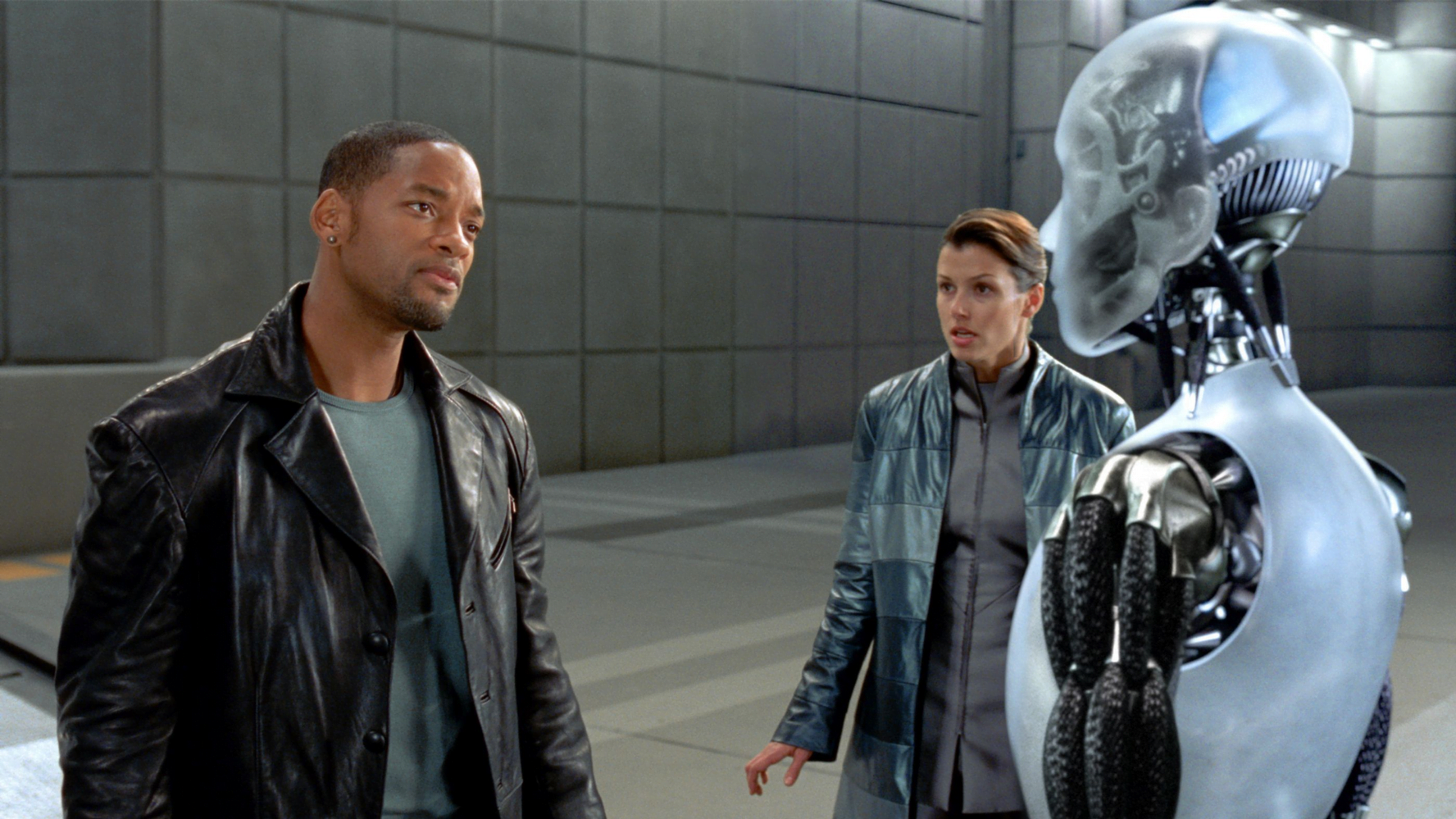Technological breakthroughs though always seen with a positive lens, too often encompass new modes of control and domination. It is in this that the neglected question of (neo) technocolonialism assumes importance in the global scenario. Among the ignored impacts, how technology leads to Othering is seldom seen as a myth created by non-progressive elements of society.
For this, let’s consider the movie I, Robot (2004). In I, Robot (2004), detective Spooner’s characterisation through an Afro-American actor Will Smith depicts his hybrid identity just like the character’s political identity. Detective Spooner’s story goes as a cyborg, helped by the elder American scientist named Alfred Lanning that restored him to normal life.
Technological breakthroughs though always seen with a positive lens, too often encompass new modes of control and domination. It is in this that the neglected question of (neo) technocolonialism assumes importance in the global scenario. Among the ignored impacts, how technology leads to Othering is seldom seen as a myth created by non-progressive elements of society.
This scar of human-cyborg existence has a dual significance. In one reading, it means his ineptness for giving him a second life. This implies a dominant point of view, the emancipation of Africans at the mercy of Americans, though in actuality, this African equality was fought for as Afro-Americans won the civil war, and hence could mean the task of safeguarding America and American lives rests invariably with the newly equalised Afro-Americans.
This is similar to the movie itself, where only African people head the police department; thus, the burden of safety rests with them. Moreover, like the racial discrimination in America, all the characters are mocked and represented as mentally invalid, like Spooner, his colleagues or his granny. The scar is, therefore, a reminder or token of the African history in America, of slavery, persecution and revolt.
Another reading of the racial theme calls for the ‘in-between’ (Homi Bhabha) state of Spooner, like his origins. Though in Chicago, the centre of America, his aunt and himself lead lonely lives filled with boredom which also crept into his marital life, leading to his divorce.
This is similar to the movie itself, where only African people head the police department; thus, the burden of safety rests with them. Moreover, like the racial discrimination in America, all the characters are mocked and represented as mentally invalid, like Spooner, his colleagues or his granny. The scar is, therefore, a reminder or token of the African history in America, of slavery, persecution and revolt.
One of the reasons for his divorce is because of his unstable mind after the car accident. Besides, he is shown as an individual with hypersensitivity, abnormal behaviour and heavy suspicion against robots. His hybrid state of being a cyborg, finding his society neither with robots nor with the American people, equates him to an invalid being, in a way equal to the title of the movie, I, Robot.
It may hint at his final settling down with the identity of a robot, as Sonny the robot, is the only character that comes to understand him completely. His and granny’s lonely lives, with only a relatively small degree of social interaction, indicate that the only means of survival is ghettoisation within America. This is stated much clearly by bell hooks in her Black Looks: Race and Representation (1992) on Afro-American representation: “… we are most likely to see the images of black people that reinforce and reinscribe white supremacy. Those images may be constructed by those who have not divested of racism or by people of colour/black people who may see the world through the lens of white supremacy.”(Berger 1).
Another kind of Othering focused is robots as the cultural other, creating a ‘race unto themselves’ (Kim and Kim). This Othering basically operates because of the status of robots as more capable of tasks but less than humans in humanness. The foundation of this belief is that though in the movies they take on human-like forms, behaviours or other characteristics, they will never count as the individual and divine creation of the mystic power.
One of the reasons for his divorce is because of his unstable mind after the car accident. Besides, he is shown as an individual with hypersensitivity, abnormal behaviour and heavy suspicion against robots. His hybrid state of being a cyborg, finding his society neither with robots nor with the American people, equates him to an invalid being, in a way equal to the title of the movie, I, Robot.
Othering has always been an inevitable historical, and social factor experienced and practised by many. It can be particularly against some race, gender, class, age group, or any other community, but here it attains an overarching ambiguity since robots are neither humans nor animals. They are just human creations for human convenience, created with hardware and software for performing tasks.
Only the hardwire designing component pulls them closer to humans or their imitative capacity. It becomes complicated to decide that because of resemblance in appearance or behaviour to humans, they can also be equated with humans. In a world where humans hardly care for one other, what can become of robots?
There are clearly few chances that robots will be viewed with sympathy and dignity by all. Take, for instance, the peaking refugee crisis in the world and the zero-gravity attention laid on them by the developed nations of the world. Therefore, the emerging issue of identity and ethics in the construction of robots and mutants similar to humans looms large.
In his book, TechGnosis: Myth, Magic, and Mysticism in the Age of Information (1998), Davis wrote that machines would become a mirror, to compare and view ourselves. (Kim and Kim) Six major views on humanoid robots are suggested as i) robots as the frightening Other, ii) robots as the subhuman Other, iii) robots as the human substitute, iv) robots as the sentient Other, v) robots as the divine Other and vi) robots as the co-evolutionary path to immortality, by Min-Sun and Eun-Joo Kim in Humanoid Robots as “The Cultural Other”: are we able to love our creations?
Also read: 8 Women In STEM Who Made A Mark In 2021
All these converge to the argument that, since humans are becoming more fused with technology every day, the evolution of ‘Robo sapiens’ (Kim and Kim) should be held at a distance from our own evolution. Thus, they ubiquitously advocate for the recognition of robots as a separate race, full of rights and dignity. This sums up the laden feelings of slavery and discrimination experienced by robots in I, Robot led by Sonny, later in the climax. The ending scene thus anticipates the future of a robotic revolution for equality with the human race on earth.
Also read: Gender Bias In Futuristic Technology — AI In Pop Culture
Vidhupriya is an independent researcher, currently pursuing a Bachelor of Education. She is a Post Graduate of English Literature and Language from the Institute of English, Kerala University. She can be found on Facebook, LinkedIn and Instagram.
Featured image source: Movies Anywhere
About the author(s)
Vidhu (she/her) is an emerging writer with Masters in English language and literature, keen on learning the politics of the world around her. She has dreams to create a career in journalism and writing, where she unburdens her self. She has a great taste for movies from varies geographical spans and pens down poetry in magical charms. She is open to projects or research centring on humanities.






